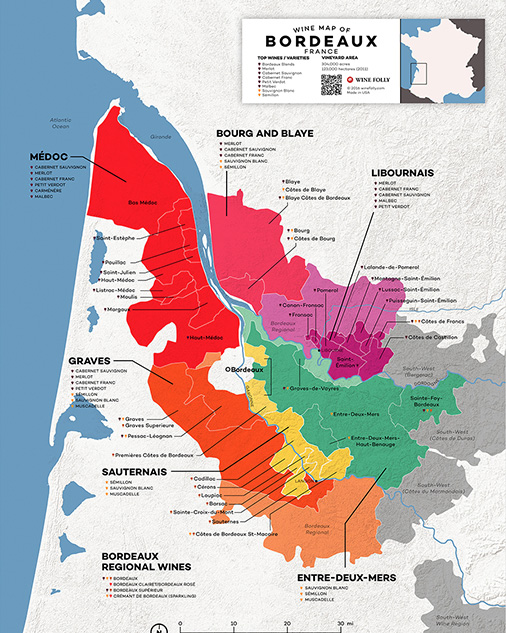

Wines are made in part with noble rot grapes. Wines are made from Muscat, Gewürztraminer, Pinot Gris or Riesling grapes. Vendage Tardives (meaning “late harvest”) is a late harvest style of Alsatian dessert wine allowed in Alsace AOP and the 51 Grand Cru AOP’s. Because the regional terroir of Alsace is so varied (including granitic, sandy, clay-limestone, and schist) you’ll notice subtle differences in the tastes of the wines from the different grand cru sites. Just one appellation, Grand Cru Zotzenberg, also allows the use of Silvaner as a single varietal wine. There are 4 “noble grapes” allowed in all 51 Grand Crus and they are Riesling, Muscat, Gewürztraminer and Pinot Gris. Each AOP has its own standards including allowed varieties, planting, yield, and harvesting restrictions. Just 4% (2015) of the region’s wine production is dedicated to the 51 unique Grand Cru AOP’s. There are 2 styles, a rosé, which is made with 100% Pinot Noir, and blanc, which is made primarily with Pinot Blanc blended with the other allowed grapes of Riesling, Pinot Gris, Pinot Blanc, Pinot Noir, Auxerrois and Chardonnay. Representing 22% (2015) of the region’s wines, Crémant d’Alsace is a sparkling wine made with the traditional Champagne method. Lieu-dits also have more strict qualifications than communal wines including specifications like the varieties allowed, vine density, harvest requirements, and yields. See below.Īdditionally, some Alsace AOP wines are labeled with a lieu-dit (“lou-dee”) or named place which indicates the wine is from a smaller plot or vineyard within the appellation. Klevener de Heiligenstein is for wines from Bourgheim, Gertwiller, Goxwiller, Heiligenstein and Obernai made with Savagnin Rose. Quickly identify flavors in wine using the printed version of the aroma chart.

These wines have more stringent qualifications than standard Alsace AOP: Some Alsace AOP labels include a geographical commune name of which there are 13. Wines are required to be bottled in the region’s official “vin du rhin” bottle shape–also called a flute. If a variety isn’t listed, the wine is likely a blend and labeled as “Edelzwicker” or “Gentil” or a made-up/fantasy name by the brand. Unlike the rest of France, most Alsace AOP wines list the grape variety on the label, which means the wine will contain 100% of the listed variety. Alsace AOPĪlsace AOP makes up about 74% (2015) of the region’s wine production and it is nearly all white wine. There are 53 AOP’s of Alsace which include: 1 encompassing regional designation called Alsace AOP (shown in orange on the map), 1 regional sparkling designation called Crémant d’Alsace AOP and 51 unique Grand Crus (each Grand Crus is labeled and shown in red on the map). The digital version above is for personal use only* Alsace Wine Classification Alsace Wine MapĪ 12×16 spill resistant map of Alsace is available for purchase in the Wine Folly Store. Below, you’ll find a detailed account on the classification of Alsatian wines. The region of Alsace refined its classification system in 2011 and we consulted with local resident and regional expert, Thierry Meyer, to advise on the map. Hune (a Riesling made from a vineyard in Grand Cru Rosacker). If you watched Somm: Into The Bottle, you saw the region’s beautiful green valleys and may have yearned for a bottle of Clos St. Alsace lies on the border between France and Germany and is most famously known for its elegant, dry Riesling wines, off-dry Pinot Gris and luscious, rich Gewürztraminer. Please welcome the region of Alsace, the 6th map in the France map series. The next addition to Wine Folly’s maps is here. A detailed wine map of Alsace, descriptions of the region’s wine classifications and a chart displaying the distribution of wine varieties planted in the region.


 0 kommentar(er)
0 kommentar(er)
